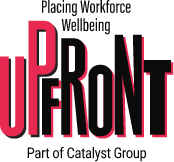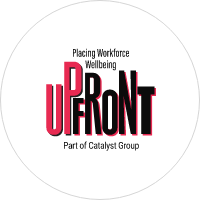Nutrition for nourishment – Healthy food habits are a gateway to workforce wellbeing
What we eat is a step that contributes to a healthy life. With the pace of technology today, there is an array of articles and documentaries to disseminate awareness about health, fitness, and nutrition. However, on visits to the textile factories we work with, I see workers gorging on junk food with no understanding of what it could do to their bodies.
Good health remains at the core of creating a healthy, happy, and resilient workforce. Thus, in order to work towards making wellbeing a reality for the workforce, we had to identify what the problem was. What have been the barriers to eating healthy for the factory workers, whether it is poor awareness, accessibility, or just a lack of motivation?
In a quest to find answers to these questions, four reasons echoed strongly. First was that people from weaker socio-economic backgrounds have a general misunderstanding that eating healthy on a budget is difficult. In addition to this, there is a lack of awareness about food groups and their nutritional contents. Third, eating healthy is not seen as a preventive health measure and hence is not prioritised. Finally, existing gender norms prevent women from making decisions on the purchasing power and eating habits of the family.
As part of the various wellbeing initiatives implemented in supply chains, Upfront has facilitated sessions on health and nutrition with over 2,00,000 workers. The program has been focused on enhancing awareness among the workforce on the role of health and nutrition in enhancing wellbeing of the workforce and productivity for the workplaces. It has been successfully able to create a common understanding of how Healthy food need not be expensive, but locally available food at reasonable prices are equally rich in nutritious content and improve health in the longer run.
During the course of our programmes at the factories, the team would try simple nudges to change the eating habits of the workforce. Instead of coffee or tea, the participants were provided with cool refreshments like buttermilk, lemon juice, muskmelon, watermelon, etc. in the summer season. Intake of beverages should be season-specific so that it is beneficial for health. After the initial discomfort of shifting from tea/coffee, the workers started enjoying the new cold beverages.
It was observed that the workers started feeling the change during the sessions as they switched to healthier snacks. They felt fresh and energetic and were motivated to prepare healthy food for their families using the recipes shared by us. They were able to save money and reduce the consumption of junk food.
Such interventions received a positive response from the factory management. They were delighted to see the workers switch from oily snacks to healthier options. When workers felt energetic, they were happier, and it inadvertently led to an increase in productivity. In addition, we were positioned as experts who could try innovations such as cooking competitions and special events to promote the concept of nutritious food and a balanced diet to improve the health and wellbeing of the workforce.
Our job keeps us inspired to try new salad recipes like the ones mentioned below:
Moong dal Kosambari salad: moong dal, cucumber, carrot, lemon, salt, and coriander with a tempering of oil and curry leaves. Boiled green gram salad: boiled green gram, onion, chilli, lemon, coconut, and coriander with a tempering of oil and curry leaves. Chana dal Salad / Kadalekalu Usli: boiled chana dal, onion, chilli, lemon, coconut, and coriander, with a tempering of oil and curry leaves. Fruit salad: banana, apple, pomegranate, papaya, grapes, vanilla and pista ice cream, and dried grapes.
We introduced the nutrition recipes during our training to provide as snacks after the training; this made a huge impact on workers and factory management to change their perspective for the better. Workers started to prepare nutritious food for themselves and their family members, with the school teachers of their children also recognising and appreciating the nutritious food brought by them in the lunch box.
In a few factories, the factory management has also changed their canteen menu. Instead of providing oily snacks during lunchtime, it began providing banana and ragi malt, which is native to the Karnataka region, has a high nutritional value, and is not very expensive. Some other factories planned to change their canteen vendor ship menu and curate it specially to include a well-balanced nutritional meal and healthy food options.
Upfront has been working closely with the factory workers and the factory management to ensure the wellbeing of the workforce is prioritised. Interventions like these have ensured healthy eating habits for the workers. It has resulted in significant positive changes in energy and productivity after they started eating nutritious food, and Hb levels increased for a lot of workers, especially women.
We continue to break down barriers, challenge misconceptions, and champion a culture of holistic wellness. Every effort contributes to a workplace that not only values its employees but actively invests in their health and happiness. With initiatives like this, we move towards a future where wellbeing isn’t just a buzzword but a lived reality for every member of the workforce.


